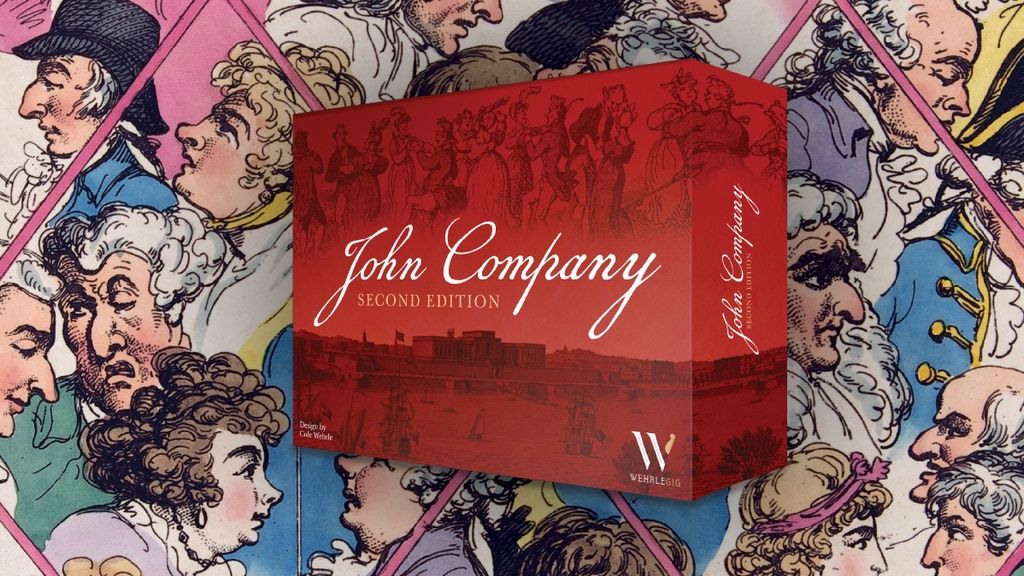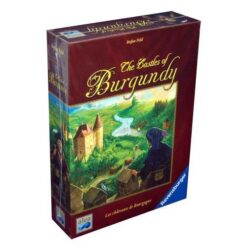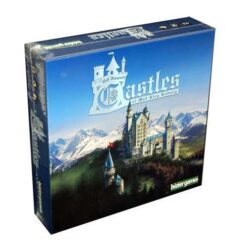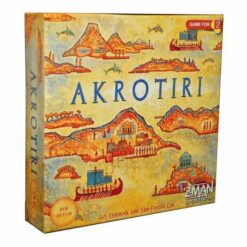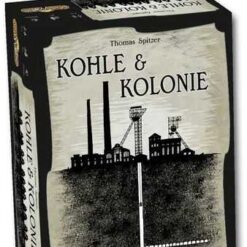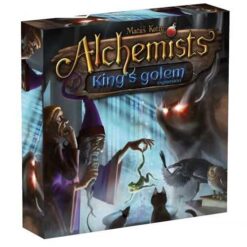John Company 2nd Ed – Kickstarter
RM100.00
John Company – RM359.00
INCLUDES:
- John Company: Second Edition
- Access to add-ons in Backerkit
Add-ons
– John Company Coins – RM125.00

Chart the rise and fall of the East India Company in this cutting negotiation game about high society at the dawn of the British Empire. Created by Cole Wehrle, the award-winning designer of Root and Pax Pamir, John Company: Second Edition is a deep and thoughtful design from a master builder of historical games.

John Company is the second game in our series on the British Empire. In our previous game (Pax Pamir), players attempted to construct a new future for a land caught between two global rivals. This game presented agents of empire as hapless interlopers, caught up in a struggle that they could scarcely understand.
In John Company, players move deep into the bowels of empire and take the roles of ambitious families out to make a name for themselves at the dawn of the British Empire.
Though often upsetting, this vantage point offers a better understanding of how empires work in practice. Empire-building is one of the most common themes in game design, but the vast majority of games get the fundamentals completely wrong. Empires are certainly not heroic enterprises, but they are also not comic book villains, masterminding global domination. Instead, empires are something far more insidious. They are something that happens in aggregate, composed of a thousand little choices and many individuals with their own interests and ambitions.

John Company thrusts players into those thousand little choices. As matriarchs and patriarchs of ambitious British families in the eighteenth and nineteenth century, players guide their children to positions of respectability. To do this they will often cajole for positions of power and prestige within the British East India Company.
John Company offers players a new understanding of British history in the eighteenth and nineteenth century that reflects contemporary scholarship on the subject and extensive research into primary documents. John Company attempts to put the critical events of that time in their proper context and show how the imperial experience transformed the domestic culture of Britain. The East India Company lurked behind every building of a textile mill and every bit of wealth in a Jane Austen novel.
John Company is an uncompromising portrait of the people who made the Company and the British Empire what it was. It is as frank as it is cutting in its satire. Accordingly, the game wrestles with many of the key themes of imperialism and globalization in the eighteenth and nineteenth centuries and how those developments were felt domestically. As such, this game might not be suitable for all players. Please make sure everyone in your group consents to this exploration before playing.
If you’d like to read more about the game’s arguments, click here.

In John Company, players collectively guide the fate of the Company by securing positions of power and using them to benefit their own interests. As they climb through the Company’s ranks, players will find themselves directing critical trade missions, bribing members of Parliament for favors, and jockeying for advantageous marriages during the London Season. If you’ve ever wanted to play a board game with the narrative scope and skullduggery of a Victorian novel, John Company is your game.
John Company offers its players an unparalleled economic sandbox that covers the history of the Company from 1710 to 1857 using four scenarios. Once players get comfortable with the games first scenario, they can explore a wide range of challenges, including the end of the Company’s monopoly and the growth of enterprising private firms.
Though massive in scope, John Company relies on a fundamentally simple core that teaches players how to play while they play. Turns begin with players assigning their children to various career paths and then continues through the step-by-step operation of the Company. Players are always able to negotiate so there’s almost no downtime between actions.

John Company: Second Edition is a dramatic reimagining of the first edition that took over two years of extensive design and production work.
The first edition of John Company had a very limited production budget. For this new edition, we have overhauled every element of the physical production and have done our best to make sure the design has never been more approachable for new players.

We have rebuilt every graphical element in the game to make John Company more immersive and playable. The rulebook has been dramatically expanded, with plenty of examples and a more conversational style.

Just about everything players own can be exchanged at any time. The old promise system has been redesigned to provide players with the ability to give away future favors for crucial leverage in the heat of a negotiation. Players have never had so many ways to make a deal.

The old event tables have been replaced with a new event system that is much easier to resolve. Use 20 beautiful punchboard tiles featuring hand-painted Ganjifa-style art by Amita Pai, to bring the subcontinent to life. Though few in number, these tiles create a dizzying array of possible situations, from the reemergence of Mughal authority, the rise of new kingdoms, or the aggressive rejection of the Company’s efforts.

For this new edition, we have dramatically improved the game’s scenarios, especially those dealing with the deregulation of the Company. John Company also features a revolutionary new automata from well-regarded solo designer Ricky Royal. Players will find the negotiations no less fierce in the single and two player modes against a bot that is able to wheel and deal like a human player.





| John Company / Pax Pamir 3rd | John Company, Pax Pamir 3rd Edition |
|---|
Related products
Euro Game
Euro Game
Euro Game
Euro Game
Euro Game
Euro Game
Euro Game



